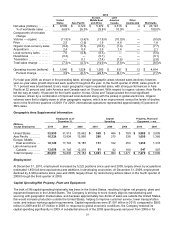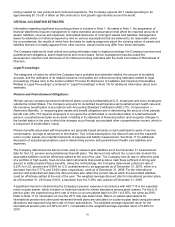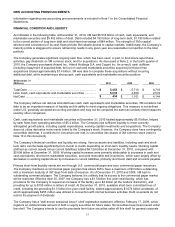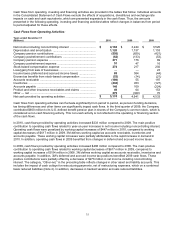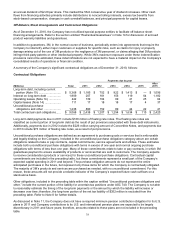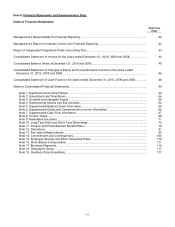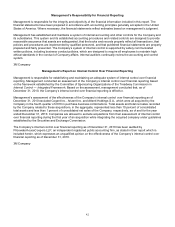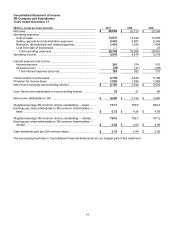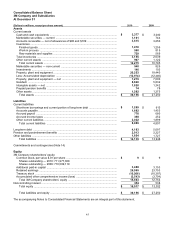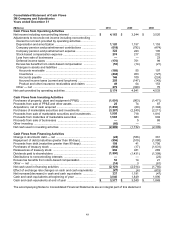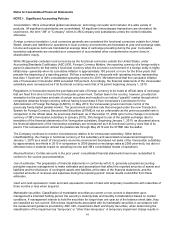3M 2010 Annual Report Download - page 45
Download and view the complete annual report
Please find page 45 of the 2010 3M annual report below. You can navigate through the pages in the report by either clicking on the pages listed below, or by using the keyword search tool below to find specific information within the annual report.
39
FINANCIAL INSTRUMENTS
The Company enters into contractual derivative arrangements in the ordinary course of business to manage foreign
currency exposure, interest rate risks and commodity price risks. A financial risk management committee, composed
of senior management, provides oversight for risk management and derivative activities. This committee determines
the Company’s financial risk policies and objectives, and provides guidelines for derivative instrument utilization. This
committee also establishes procedures for control and valuation, risk analysis, counterparty credit approval, and
ongoing monitoring and reporting.
The Company enters into foreign exchange forward contracts, options and swaps to hedge against the effect of
exchange rate fluctuations on cash flows denominated in foreign currencies and certain intercompany financing
transactions. The Company manages interest rate risks using a mix of fixed and floating rate debt. To help manage
borrowing costs, the Company may enter into interest rate swaps. Under these arrangements, the Company agrees
to exchange, at specified intervals, the difference between fixed and floating interest amounts calculated by
reference to an agreed-upon notional principal amount. The Company manages commodity price risks through
negotiated supply contracts, price protection agreements and forward physical contracts.
A Monte Carlo simulation technique was used to test the Company’s exposure to changes in currency and interest
rates and assess the risk of loss or benefit in after-tax earnings of financial instruments, derivatives and underlying
exposures outstanding at December 31, 2010. The model (third-party bank dataset) used a 95 percent confidence
level over a 12-month time horizon. The model used analyzed 18 currencies, interest rates related to three
currencies, and five commodities, but does not purport to represent what actually will be experienced by the
Company. This model does not include certain hedge transactions, because the Company believes their inclusion
would not materially impact the results. Foreign exchange rate risk of loss or benefit increased in 2010, primarily due
to increases in exposures, which is one of the key drivers in the valuation model. Interest rate volatility decreased in
2010 because interest rates are currently very low and are projected to remain low, based on forward rates. The
following table summarizes the possible adverse and positive impacts to after-tax earnings related to these
exposures.
Adverse impact on
Positive impact on
after-tax earnings
after-tax earnings
(Millions)
2010
2009
2010
2009
Foreign exchange rates .....................................
$
(108
)
$
(81
)
$
120
$
91
Interest rates ......................................................
(4
)
(11
)
4
4
Commodity rates ................................................
(15
)
(20
)
12
13
The global exposures related to purchased components and materials are such that a 1 percent price change would
result in a pre-tax cost or savings of approximately $62 million per year. The global energy exposure is such that a 10
percent price change would result in a pre-tax cost or savings of approximately $38 million per year. Derivative
instruments are used to hedge approximately 1 percent of the purchased components and materials exposure and
are used to hedge approximately 10 percent of this energy exposure.


